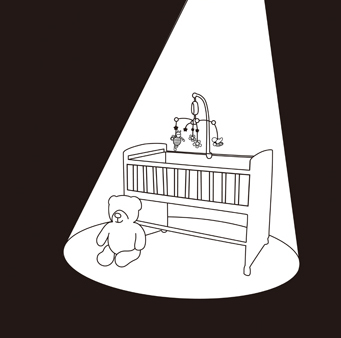
Despite its prevalence, miscarriage is still taboo. According to the American College of Obstetricians and Gynecologists (ACOG), it’s the most common form of pregnancy loss, with ten to 25 percent of all pregnancies ending in miscarriage. Factors such as maternal stress, environmental impurities, hormonal problems, and the mother’s age are cited as contributing factors, but miscarriages often happen for no apparent reason.
Most miscarriages happen in the first 12 weeks of pregnancy. “The incidence of miscarriage has continuously increased in the past few years,” says Dr. Wang Yinuo, an OB/GYN at Vista Medical Center. “About 50 percent of miscarriages occur during the first trimester [because of chromosomal abnormalities]. This incidence decreases to 20-30 percent in second trimester losses and five-ten percent in third trimester losses.”
Symptoms of a miscarriage include pain or cramping in the abdomen or lower back, fluid or tissue passing from the patient’s vagina, and spotting or bleeding. Once a miscarriage is suspected, the OB/GYN
will usually do an ultrasound to confirm whether it’s complete. The doctor may recommend a D&C (dilation and curettage) to remove remaining fetal tissue as well as prevent hemorrhaging and infection. After the procedure, a follow-up is necessary to ensure the uterus has recovered.
However, the hardest part of any miscarriage isn’t necessarily the physical but the emotional recovery. “Most patients become disappointed and nervous about [future]miscarriages,” says Dr. Wang. “Ninety percent of them cry in the clinic. I first soothe them by explaining what miscarriage is and what causes it, then help them find out the factors that [led to their own situation].”
If the miscarriage happens before 10 weeks of pregnancy, the body is more likely to safely expel the tissue on its own. According to the Mayo Clinic, about 50 percent of patients choose not to undergo a D&C in this case to eliminate lingering questions about the fetus’ viability. However, other women may opt for the D&C to find closure or minimize the risk of gynecological complications.
To gain insight into the experiences of couples who have experienced a miscarriage, we spoke to a Malaysian-born mom who asked to remain anonymous. Now the proud mother of a 4-year-old and a 1-year-old, she experienced two miscarriages in her home country – one before her eldest and one after.
Tell us about the events leading up to your first miscarriage.
We had tried for a baby for over three years. I was on Clomid, a fertility drug. So when I was finally pregnant, it was with great anticipation and excitement. Up until the eleventh week, checkups showed everything was going well; both growth and heartbeat were good, and there was movement.
About a week later – after a very busy week at work – I had some bloodstains. I called my doctor and he prescribed a full day of bed rest before scheduling an appointment for the following day.
I was shocked and devastated when the ultrasound showed that the fetus no longer had a heartbeat. Even the doctor was surprised. I cried so hard at his office; I simply could not believe it.
A few days later, I saw another doctor to get a second opinion, hoping that things would be different with her more “technologically-advanced” equipment. But it was the same.
Both doctors recommended that I do the D&C immediately, but I refused. Part of me was too shocked and saddened. My first doctor told me to take my time and said that in most cases, the fetus would “self-abort” and I should be warned that it could get “messy.”
After a week of intermittent bleeding, I decided to go for the D&C. The doctor did another round of ultrasound scans to reassure me that the fetus was no longer viable and there really was no heartbeat.
After the D&C, I felt a sense of loss but also of relief that I could let go and move on. It was a very quick 15-minute procedure. I was under general anesthesia and could leave the hospital after it wore off. I was then given one week of medical leave.
How did your partner deal with the situation? How did you support each other in the aftermath?
We were heartbroken. It didn’t help that we wanted a child so much; losing the baby felt like our hopes and dreams had been dashed. As Christians, we were thankful to have family and friends to pray for us, support us, and encourage us. Many friends shared with us stories of their own miscarriages – which they had kept to themselves – and of how they went on to conceive healthy, full-term babies. A dear friend told me that my baby is with Jesus already; that brought me much comfort.
We decided to name our [lost]baby Xin En, which means “a heart held by grace.” We got to see the baby’s strong heartbeat for a whole two months. It was good to have some time to mourn. Naming the baby and writing a journal helped tremendously.
Although it was in an early stage of pregnancy, the pain was no less devastating. Up until that point, we hardly heard of anyone talking about miscarriages. We still talk about it – sometimes to encourage people going through a similar grief – but with an overwhelming sense of gratitude for the two beautiful children we’ve been blessed with since.
Did you feel supported – both emotionally and medically – after the miscarriage?
Yes, the doctor was very kind. He told us to take time to heal both physically and emotionally. He told us that we could always try for a baby again but not to rush it. Some people need a year and some just a month. Most importantly, he told us to be emotionally ready before we tried again.
Was the second miscarriage more, less, or equally difficult as the first one?
My second miscarriage happened a year after my eldest son was born. We were not expecting to get pregnant and were getting ready to move to Beijing. From the beginning, at seven or eight weeks, the doctor told us that the fetus’ growth did not meet her expectations. So we were alerted to the possibility of a miscarriage further along. We never had the chance to see the fetus grow, nor [did we see]a strong heartbeat. In a sense, it was emotionally much easier this time. Nonetheless, it created a lot of fear – what if I couldn’t have any more children? What if my womb just couldn’t sustain a pregnancy?
What do you wish you’d known back then? Would you have done anything differently?
I would probably have done my D&C for the first miscarriage immediately as recommended by the doctors. The whole week of waiting for the fetus to self-abort was emotionally upsetting.
If your children were to ask about miscarriages one day, how would you approach the topic with them? Would you be candid about your own experience?
I would probably tell them that they could have been in a bigger family or that our family structure could have been very different. I would tell them that we lost two babies through miscarriage. I would tell them that miscarriages happen, sometimes for reasons unknown. Nonetheless, we have the assurance that they are in heaven and we will meet them someday.
What would you say to other women who have gone through a miscarriage?
Give yourself time to heal both physically and emotionally. Allow yourself and your spouse to grieve. Take time out to talk about it together, to cry it out.
It didn’t help when people told me that miscarriages happens all the time and to just move on or forget about “it.” For me, the baby was real – the heart flutters, the heartbeats, the squirmy movements on the ultrasound. It was a child created by God, but due to mysterious reasons they did not survive.
Don’t rush to try for another baby. Some people try to “replace” the child they lost and end up getting depressed, even during the [successful] pregnancy. However, don’t have so much fear that you give up trying completely. Eat nutritious food and regain your strength. When you and your spouse are ready, try again.
Resources
Vista Medical Center
维世达诊所朝阳区
Dr. Wang Yinuo is an OB/GYN who consults in English and Chinese. Daily 24hrs. 3/F, Kerry Centre, 1 Guanghua Lu, Chaoyang District (8529 6618, fax 8529 6615, vista@vista-china.net) www.vista-china.net
朝阳区光华路1号嘉里中心3层
American Pregnancy Association (APA)
This US-based organization aims to promote pregnancy wellness through education, support, advocacy, and community awareness. The website contains a host of articles covering conception and fertility issues, pregnancy complications, miscarriage, and birth. Visit their website at americanpregnancy.org.
This article originally appeared on page 24-25 of the August 2014 issue of beijingkids. To find out where to get your free copy, email distribution@truerun.com or view it on Issuu.
Illustration by Sun Zheng



